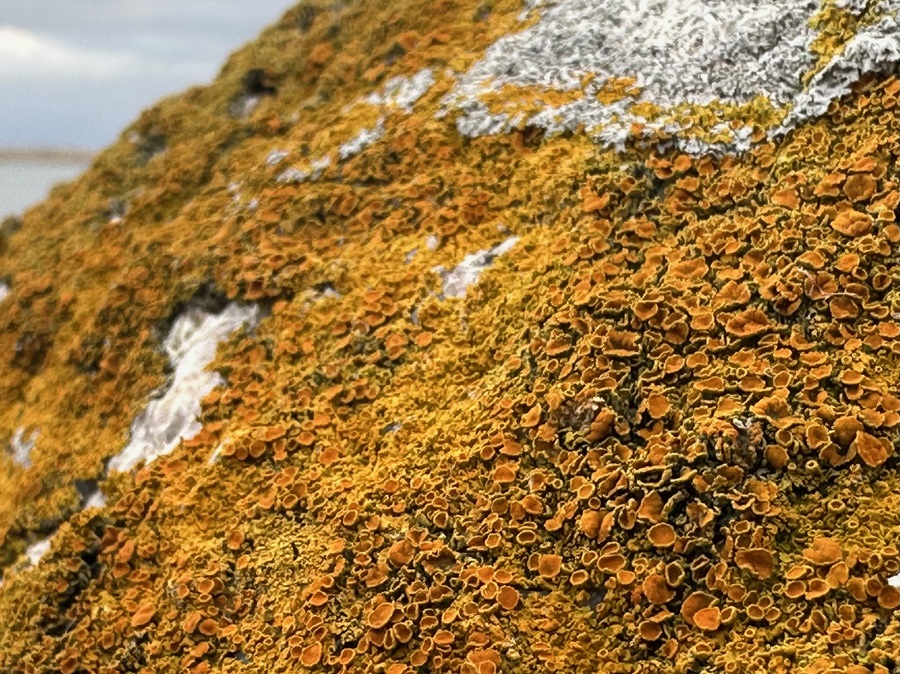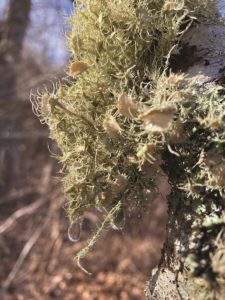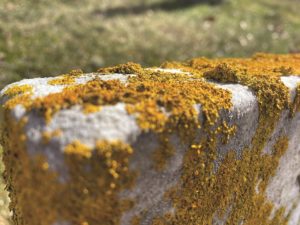
Last week we marked the winter solstice, the daylight’s yearly nadir; now, each subsequent day will bring with it incrementally more sunshine. Xanthoria parietina is ready. The orange coloring of maritime sunburst lichen comes from parietin, a compound produced by the organism to shield both its algal and fungal components from harmful UV radiation. Parietin may also play a role in the lichen’s tolerance of desiccation from wind and salt spray. These adaptations allow X. parietina to thrive in extremely exposed conditions like those found atop the glacial erratics on the shoreline of Nauset Marsh in Orleans, pictured here.


